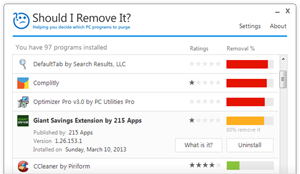Import table
advapi32.dll
OpenServiceW, ReportEventW, RegSetValueExW, SetSecurityDescriptorDacl, InitializeSecurityDescriptor, RegOpenKeyExW, RegQueryValueExW, StartServiceCtrlDispatcherA, RegCloseKey, RegisterServiceCtrlHandlerA, RegisterEventSourceA, DeregisterEventSource, SetServiceStatus, CloseServiceHandle, OpenSCManagerW
dnsapi.dll
DnsFree, DnsQuery_A
iphlpapi.dll
CancelIPChangeNotify, NotifyAddrChange, GetAdaptersAddresses, GetAdaptersInfo
kernel32.dll
LoadLibraryA, InitializeCriticalSectionAndSpinCount, GetCPInfo, GetACP, GetOEMCP, IsValidCodePage, HeapAlloc, VirtualAlloc, HeapReAlloc, RtlUnwind, HeapSize, GetLocaleInfoA, WideCharToMultiByte, GetStringTypeA, MultiByteToWideChar, GetStringTypeW, LCMapStringA, LCMapStringW, GetTimeZoneInformation, CompareStringA, CompareStringW, TerminateThread, WaitForSingleObject, CreateThread, ReadFile, CloseHandle, DeviceIoControl, CreateEventA, ResetEvent, WaitForMultipleObjects, SetEvent, InitializeCriticalSection, CreatePipe, RaiseException, PeekNamedPipe, GetFileInformationByHandle, GetProcessHeap, LeaveCriticalSection, GetSystemTimeAsFileTime, GetCurrentProcessId, GetTickCount, QueryPerformanceCounter, HeapFree, VirtualFree, HeapCreate, InterlockedDecrement, GetLastError, GetCurrentThreadId, SetEndOfFile, FileTimeToLocalFileTime, FileTimeToSystemTime, SetLastError, InterlockedIncrement, TlsFree, TlsSetValue, TlsAlloc, TlsGetValue, DeleteCriticalSection, GetStartupInfoA, GetFileType, SetHandleCount, GetCommandLineW, GetEnvironmentStringsW, FreeEnvironmentStringsW, GetModuleFileNameW, GetModuleFileNameA, GetStdHandle, WriteFile, ExitProcess, GetProcAddress, Sleep, GetModuleHandleW, IsDebuggerPresent, GetCurrentProcess, UnhandledExceptionFilter, TerminateProcess, GetCurrentDirectoryA, EnterCriticalSection, SetUnhandledExceptionFilter, SetEnvironmentVariableA, GetModuleHandleA, SetFilePointer, GetConsoleCP, GetConsoleMode, FlushFileBuffers, SetStdHandle, WriteConsoleA, GetConsoleOutputCP, WriteConsoleW, CreateFileA, GetFullPathNameW, FindFirstFileW, GetDriveTypeW, CreateFileW, DeleteFileW, CreateDirectoryW, GetFileAttributesW, LocalFree, FormatMessageW, OutputDebugStringW, UnmapViewOfFile, MapViewOfFile, CreateFileMappingA, GetFileAttributesA, GetVersionExA, FindClose, VirtualQuery, GetDriveTypeA, InterlockedCompareExchange, GetStartupInfoW
shfolder.dll
SHGetFolderPathW
user32.dll
CreateWindowExW, DispatchMessageA, GetMessageA, PostMessageA, MsgWaitForMultipleObjects, PeekMessageA, DestroyWindow, PostThreadMessageA
ws2_32.dll
WSAIoctl, WSACreateEvent

